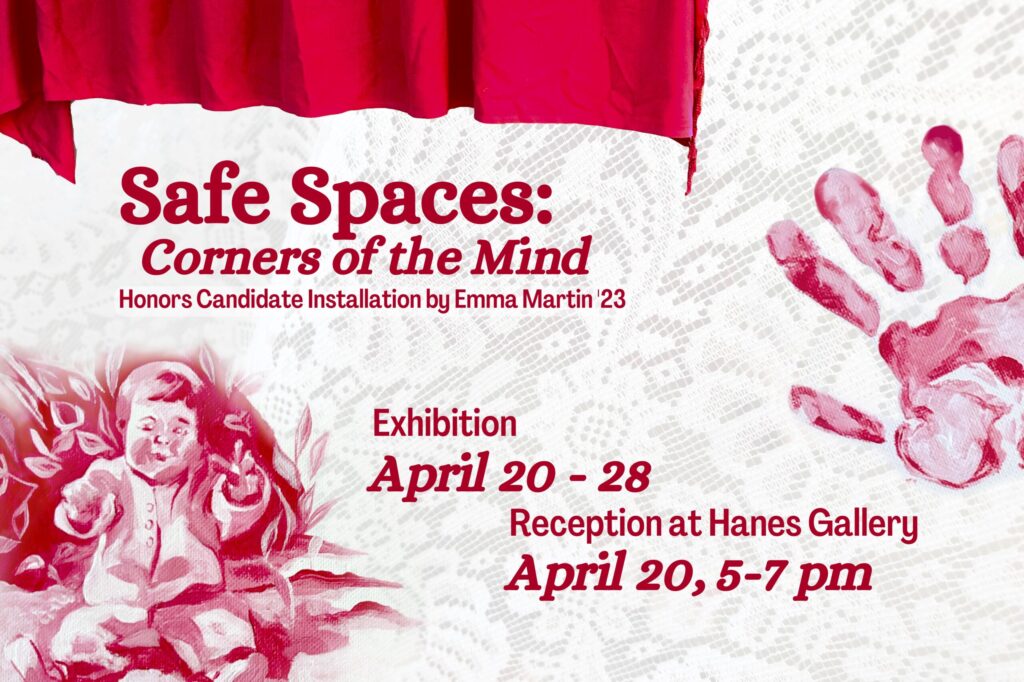Safe Spaces: Corners of the Mind

Safe Spaces: Corners of the Mind
Emma Martin
Honors Candidate Exhibition
APRIL 20 – 28, 2023
MEZZANINE GALLERY
Safe Spaces: Corners of the Mind is a meditation on imaginative freedom and the comforting escape it provided me as a child. It translates this phenomenon into a contemporary context when I am entering adulthood. Overall, this installation aims to bring this mental state of creative freedom with me into my post-grad life by reminding me of the creative spaces I experienced as a child and the memories associated with them.
The three representations of concrete spaces from my childhood provide a sense of imaginative freedom in the form of blanket forts; the blanket fort represents comfort but also symbolizes an ability to escape from the unsettling outside world. It presents the child’s mind with an imaginative dreamscape where they can suddenly be a grown-up, dive down the rabbit hole, or save the day. As a child, I frequently got lost in my thoughts and creative stories; I would create what I called “scenes” with my dolls, and I made up entire lives for them. I sat in the corner of my bedroom underneath the window — so the natural light flooded over me — for hours, able to become completely enamored with the fictional tales I wove. This experience provided my mind with distraction from the various worries I had about the world that seemed to swallow me whole. I learned to identify the feeling my mom termed ‘anxiety’ pretty early on. Whether in the corner of my bedroom, my treehouse in the backyard, or even the garden at our first flat in London, I found sanctuary in this sense of place, the security I felt from my parents to be creative, and the other-worldly nature of the stories I immersed myself in.
Each fort is a metaphoric re-creation of one of these spaces. Their transformation into blanket forts allows for the emphasis on child-like wonder and a safe environment for imagination. The drapings over each space are patchworks of thrifted sheets, drapes, and tablecloths sewn together, alluding to the layers of sheets and blankets that are used in the construction of a fort. These dwellings, filled with a mix of sewn and thrifted pillows, exude softness. Each fort’s unique color scheme allows for a clear distinction between them. The first one the viewer encounters reinterprets the garden behind my family’s flat in London, our first home. It has light blues and greens with floral details. The second fort the viewer encounters is a recreation of the corner of my childhood bedroom. This space takes inspiration from the fabric of my comforter and drapes; it was a pink French pastoral print, and I was mesmerized by the stories told through its images. The pinks informed the color scheme of this fort, and the compositional aesthetic of the fabric also acted as inspiration. Lastly, the viewer comes across the fort that represents the treehouse my grandfather built for my siblings and me. It was a space where we caught fireflies, made ‘picnics’ with holly leaves and berries, and looked up through oak branches at the stars, trying to guess the constellations. The cardboard paneling alludes to the wood boards of the treehouse; the pastel illustrations draw on the images of holly leaves and the starry sky.
Reception
April 20, 5-7 PM

